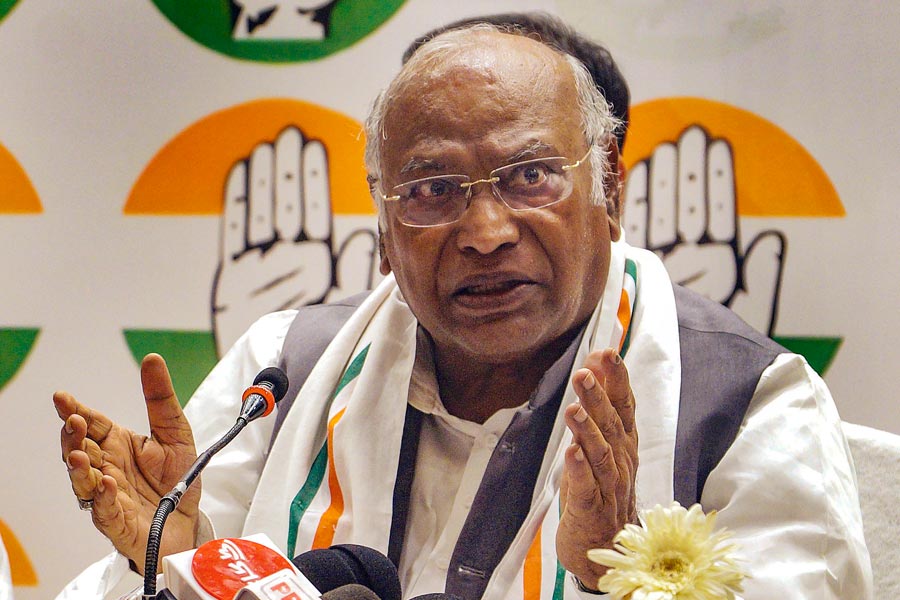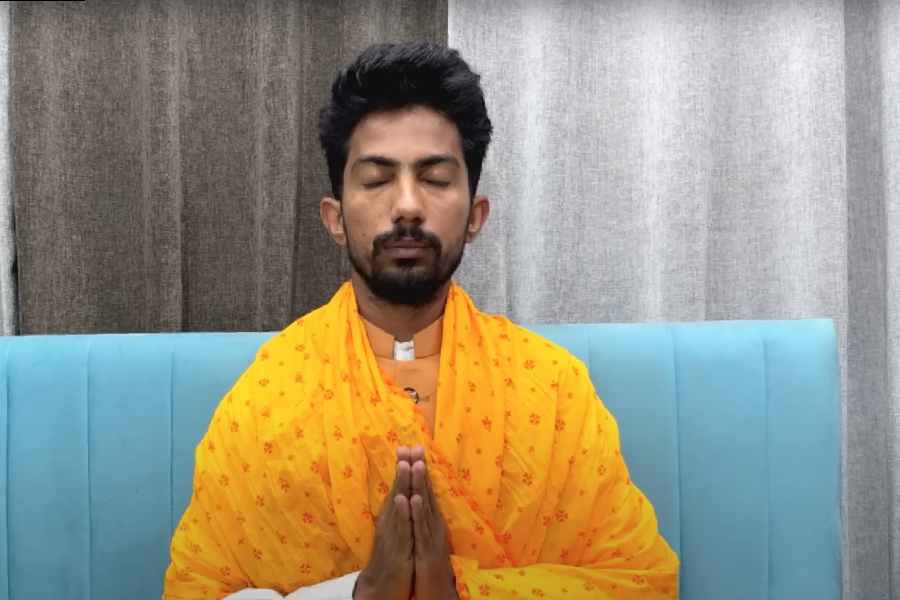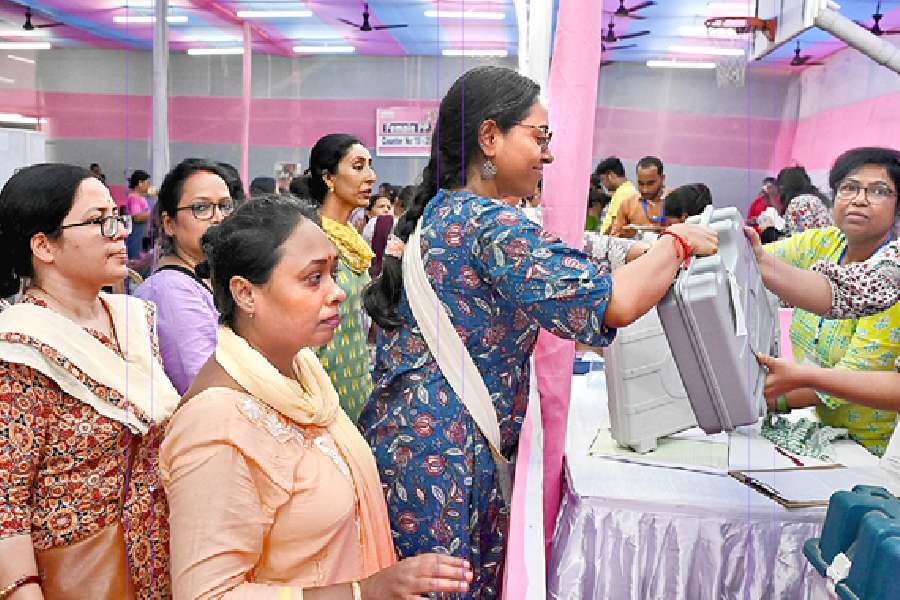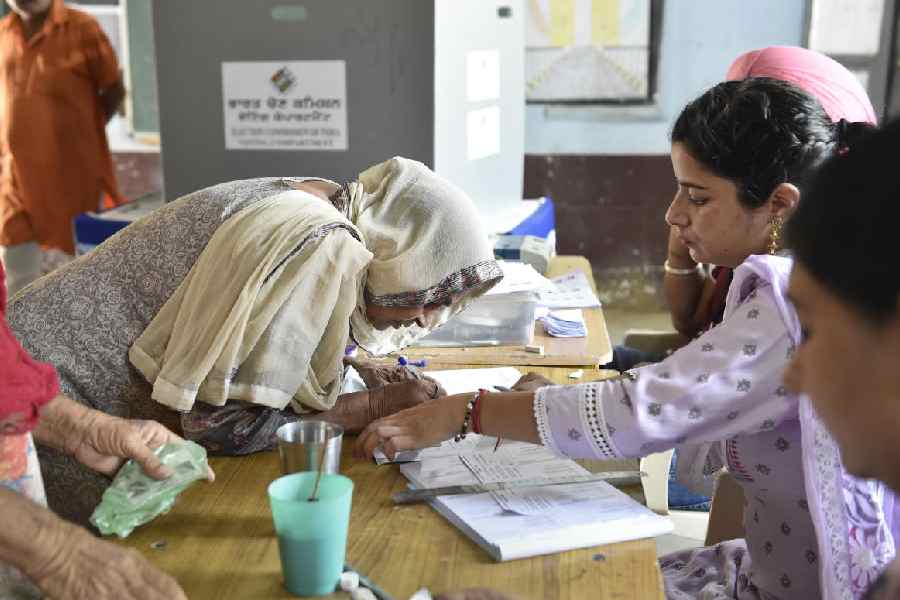Filmmakers, through the ages, have often been accused of falling prey to their own image. There is a rare bunch, however, that has the ability to continue making what they are known for without inviting the criticism that they are trapped in a state of creative redundancy.
Sanjay Leela Bhansali has consistently bucked the trend of being caught in the public perception of his art and craft. Opulence — in terms of set, costumes, mise en scene — complemented by storytelling that covers the gamut of shocking to soul-stirring — has been a signature of the man, widely acknowledged as a bona fide auteur, which he has successfully taken a step up with every new project.
Heeramandi: The Diamond Bazaar — that marks Bhansali’s much-awaited web series debut — has all that the filmmaker is known for, embellished and accentuated over eight episodes. If his last film, Gangubai Kathiawadi, looked at the rise of a helpless young girl, played by a sublime Alia Bhatt, from a brothel in Mumbai’s Kamathipura to the top of the male-dominated underworld, then Heeramandi chronicles the lives and loves, grandeur and grit, spirit and sadness of the nautch women of Lahore’s infamous Heeramandi; women, described at the beginning of the series, as those who ‘lured the nawabs through poetry, music, dance and seduction’.
Set in pre-Independence India, with the call for a British-free nation getting louder by the day and a rebel rising on the anvil, the courtesans of Heeramandi live a life which is part fantastical and part steeped in reality. They wield extreme power and yet are disempowered in many ways.
Created and directed by Bhansali, with its original concept credited to Moin Beg, Heeramandi starts off on a dark note with a newborn peddled to a childless nawab and a murder being passed off as suicide. The stage is, therefore, set for the interplay of intrigue, one-upwomanship, rebellion, love, seduction, betrayal and more. It is to Bhansali’s credit that he is largely successful in melding all these elements together even as he builds a world which may be in another era with players drawn from fabric and circumstances different from our own but one that pretty often strikes an emotional chord.
Holding centre stage with a performance that is distinguished by myriad layers, is Manisha Koirala’s ‘sahab’ aka the madam of Shahi Mahal. Mean and mesmerising in equal measure, Mallikajaan is used to calling the shots, manipulating the nawabs, who are, in turn, subservient to the British, fending off jealous contemporaries, dominating the city’s social scene and resorting to thundering umbrage whenever a courtesan’s body and not her art is brought into focus. “Hum chand hai jo dikhta hain har khidki se lekin kisi ke baraandey mein utarta nahin hain,” Mallikajaan tells off a Brit who she dismisses as a “khareedaar” as opposed to a “qadrdaan”.
Mallikajaan is more than just fifty shades of grey. Shrewd and scheming, crafty and yet charming enough to make the world around her dance to her tunes, Mallikajaan is fashioned like a character in a Shakespearean tragedy. The luxe lair of Shahi Mahal includes Mallikajaan’s daughters Bibbojaan (Aditi Rao Hydari), Alamzeb (Sharmin Segal Mehta) and her sister Waheeda (Sanjeeda Sheikh). There is also Lajjo (Richa Chadha), a character riddled with tragedy whose heartbreak sets the tone for the series after the first two episodes. It is at that point when a challenger rises from within Mallikajaan’s own bloodline, with Fareedan (Sonakshi Sinha) vowing to bring both the sahab of Heeramandi and her world to its knees.
Every moment of Heeramandi is vintage Bhansali. Apart from the magnificent production design — chandeliers, pearls, chiffons, gossamer, glamour, shimmer, shine — the aesthete in Bhansali is present throughout Heeramandi, but sometimes to the point of overkill. There is little in the staging of Heeramandi that feels real (and which we realise is an oxymoron of sorts). Even the simple act of shedding a tear, breaking into a laugh, looking a lover in the eye or lighting a lamp to dispel the darkness around, seems carefully choreographed.
Even as the women go about their lives in what they, in a telling scene in Episode 2, refer to as gilded cages where the grime often peeks out from beneath the grandeur, there is a certain artificiality to a large part of Heeramandi, broken only by certain scenes and players.
Bibbo, with a luminous Aditi lending both grace and gumption to a character who is more than just a courtesan, is the show’s most consistent character. The fact that Aditi is a trained dancer also works in making Bibbo stand out. Quite a few scenes belong to the character, including the heart-rending climax, and Aditi excels in a character that could have well become a stereotype.
Despite ornamental lines like “Yahan kismat hatheliyon pe nahin pairon mein hoti hain,” Mallikajaan’s best moments are when she is most vulnerable. One arrives early on with the death of a key character and the most striking and tragic is perhaps one in which Mallikajaan, broken but not willing to give up, sits under a fountain in the darkness of the night, in an effort to cleanse herself.
Bhansali’s fascination with the romance between a nautch girl and a nobleman goes back to Devdas, and the central love story in Heeramandi — which also shapes the destiny of the story and its characters — is also tinged with tragedy. The players of this star-crossed love story are Alamzeb and Tajdar (Taha Shah) whose romance, born out of reciting mushy couplets, is staged against the powerplay at Heeramandi and the fight for an independent India, but doesn’t have the steam or spirit to justify the prolonged runtime that Bhansali affords it.
Sharmin, Bhansali’s niece, is too wet behind the ears to carry off a role of such import, though Taha fares better. The rest of the men in the series — Fardeen Khan and the father-son pair of Shekhar and Adhyayan Suman — have precious little to do, looking consistently grateful to be a part of Bhansali’s canvas. The tyrannical Britishers — played by Mark Bennington and Jason Shah — are stereotypical cardboard cutouts.
It is Sonakshi Sinha and, to some extent, Sanjeeda Sheikh, whose characters simmering with both angst and suffering manage to stand out in Heeramandi. But the change of heart of their characters isn’t given enough time to grow on the viewer, even though the series plays out over eight hours.
In the end, it is the Bhansali stamp that makes Heeramandi what it is. Every frame (captured by Sudeep Chatterjee, Mahesh Limaye, Huenstang Mohapatra, Ragul Dharuman) is evocative. The music (Bhansali himself scores it, with the background music composed by Benedict Taylor and Naren Chandravarkar) touches the soul and the costumes (Rimple & Harpreet Narula) are a visual delight. The question, however, is that is it enough to keep you invested in Heeramandi for this long? The answer lies in which side of the Bhansali fan divide you are on.
What did you like and not like about Heeramandi? Tell t2@abp.in










